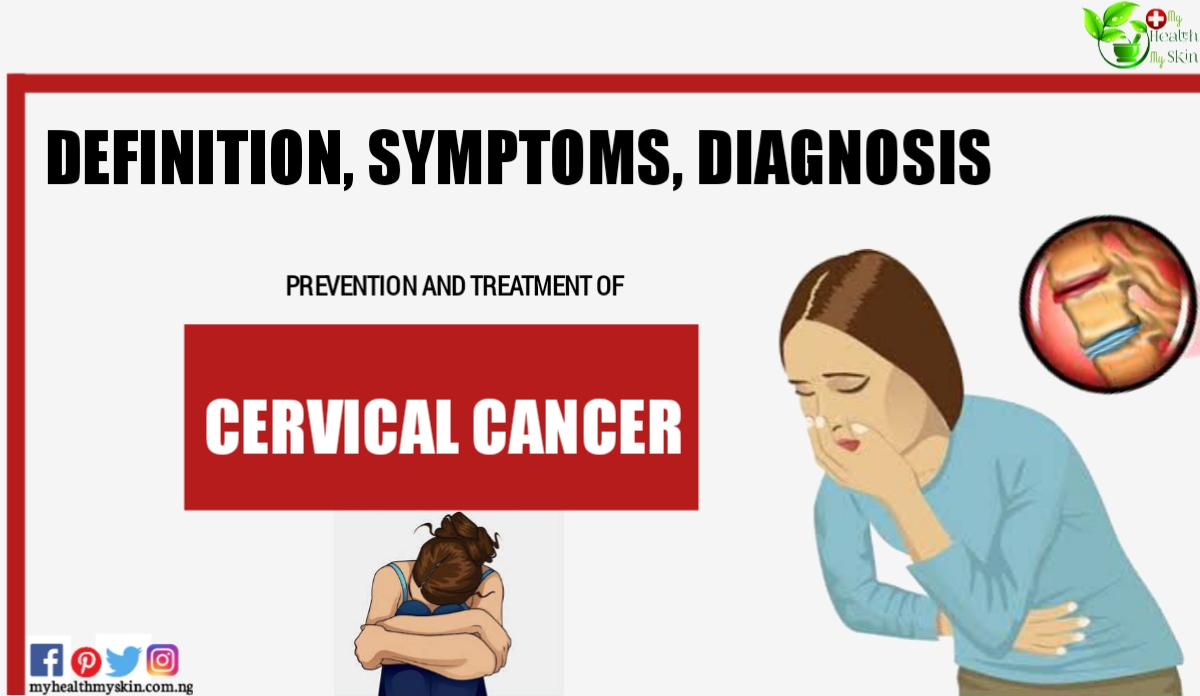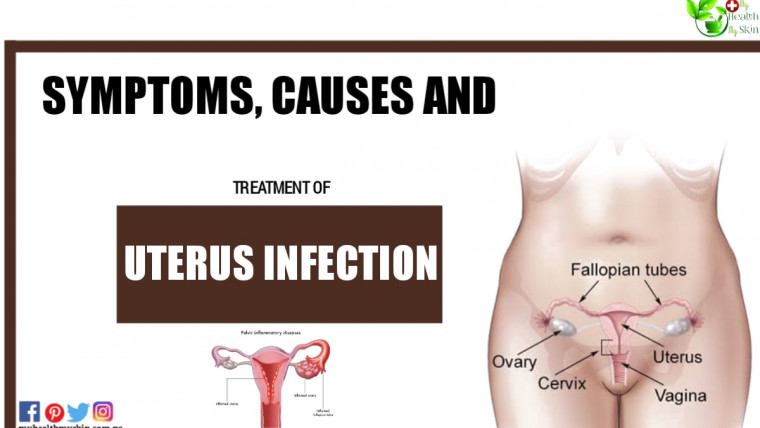Cervical cancer is a tumor located in the lining of the uterus. This pathology arises after prolonged exposure to human papillomavirus (HPV). To see more post on physical and mental health click here.
Cancer of the cervix is one of the most common cancers. Nearly 500,000 new cases are detected each year, and 250,000 deaths related to this disease.
However, a vaccine does exist that can prevent two-thirds of cervical cancers.
Definition: The Cervix (uterus)
The uterus is the main reproductive organ in a woman. It is intended to receive the fertilized egg in order to ensure the development of the fetus.
Found at the level of the small pelvis, behind the bladder and in front of the rectum, the uterus is a hollow, triangular organ about ten centimeters high and 5 centimeters wide.
The cervix, the lowest part of the organ, opens into the vagina. The uterine body, which is the largest part of the uterus intended to receive the fertilized egg, is connected by its upper right and left ends to the uterine tubes.
The uterine wall comprises of 3 layers:
- The uterine lining called “endometrium” represents the inner wall of the uterus;
- The muscular middle layer called “myometrium”;
- The uterine serosa is the outer wall of the uterus.
The cervix, which connects the vagina and the uterus, is covered with a mucous membrane that secretes cervical mucus.
This mucous membrane plays a very important role in the biological functions of the uterus.
It consists of a first outer layer called the epithelium and a second, internal, the connective tissue. Almost all cancers of the cervix start in the epithelium.
What Is Cervical Cancer?
A cancer cervix of originates in cells of the cervix of the uterus. The latter consists of two parts: the endocervix (towards the uterus) and the ectocervix (towards the vagina).
The vast majority of cancers start in the epithelium of the cervical mucosa. We then speak of carcinomas.
There are two types of carcinoma:
- Squamous cell carcinomas which represent more than 85% of cases. They develop at the level of the ectocervix;
- Adenocarcinomas in 15% of cases. They develop in the endocervix.
The cervical cancer is the 12 th most common cancer in women in France.
The number of new cases is estimated at 3,000 and more than 1,100 patients die each year.
Please Note: that the prognosis of this cancer is deteriorating. The survival rate was, in fact, 68% in the 1990s and it dropped to 62% after 2005.
What are the Risk Factors?
The major risk factor for cervical cancer is exposure to human papillomavirus (HPV).
This virus is transmitted through contact with the skin and mucous membranes, most often sexually.
Please Note: that the condom, even if it limits contact with the virus, does not provide complete protection.
Not all papillomaviruses are involved in the development of cancer. Only certain types are involved, in particular HPV 16 and 18 which are involved in 70% of cervical cancers.
Infection with papillomavirus is extremely common. It is estimated that 80% of women have been infected at least once in their life.
However, in about 10% of cases of infection, the virus persists in the lining of the cervix. It can then be at the origin of modification of the epithelium.
In this case, we are talking about precancerous lesions which can potentially develop into cancer of the cervix.
Other risk factors increase the risk of developing this cancer:
- The precocity of sexual intercourse;
- The number of sexual partners, the more there are, the more the risk increases;
- The tobacco;
- Immunosuppressive therapy (which lowers the immune system and makes the body more vulnerable to infections);
- Prolonged use of hormonal contraceptives;
- Carrying the HIV virus (also lowers immunity);
- Certain sexually transmitted infections (chlamydia, herpes );
- Have several children.
What Symptoms?
At first, cervical cancer does not cause any particular symptoms. At this time, only the screening smears can show it.
As the cancer progresses, it causes symptoms including:
- Vaginal bleeding after sex;
- Vaginal bleeding outside of your period;
- Pain during intercourse;
- Vaginal discharge;
- Pain in the lower abdomen;
- Lower back pain.
Please note ! Such symptoms should alert and lead to the consultation of his doctor.
Diagnosis, Treatment And Prevention
How To Diagnose Cervical Cancer?

Cancer of the cervix can be evoked by:
- An abnormal smear;
- Certain symptoms (mentioned above).
Faced with these two scenarios, the gynecologist performs a clinical and gynecological examination, supplemented or not by additional examinations.
The diagnosis of cervical cancer is confirmed by the analysis of a tissue sample taken from the cervix via colposcopy most often.
Please know ! A colposcopy is an examination consisting of analyzing the vagina and the cervix using a speculum and a binocular magnifying glass.
This examination takes place in the office of the gynecologist.
When the diagnosis of cervical cancer is made, additional tests are ordered to determine the extent of the cancer. Most often, it is an MRI of the pelvis that is requested.
A position emission computed tomography (PET) scan, cystoscopy (exam of the bladder) or proctoscopy (exam of the rectum) may also be ordered. A blood test is also systematically carried out.
What Treatments?
The management of cervical cancer is multidisciplinary and adapted to each case.
The treatment is based on surgery, radiotherapy and chemotherapy used alone or in combination.
The choice of treatment depends on several criteria including the type of cancer, the organ (s) affected, the stage of development, the age of the patient, the general state of health, etc.
1 – Surgical Treatment
Depending on the course of the cancer, several types of surgical interventions are possible:
- Conization of the cervix, which involves removing a conical-shaped fragment from the deep layers of the uterine cervix.
- The intervention is performed under general or locoregional anesthesia. This approach removes all cancer cells.
- Amputation of the cervix which involves removing the cervix. This method helps to treat small tumors.
This surgery preserves the uterus and does not prevent a future pregnancy.
Hysterectomy or colpo-hysterectomy. This procedure consists of removing the uterus, the cervix, the tubes and the upper part of the vagina, sometimes even the ovaries.
This method is often combined with lymph node curettage (removal of lymph nodes in the pelvis).
2 – Radiotherapy
The radiation can sometimes be associated with surgery.
Radiation therapy is an x-ray treatment designed to destroy cervical cancer cells.
There may be various undesirable effects: skin inflammation in the irradiated area, diarrhea, hemorrhoids.
The brachytherapy is a method of internal radiation therapy.
In other words, the radioactive elements are placed directly in the cervix.
Side effects are rare: white discharge, bleeding.
3 – Chemotherapy
Chemotherapy may be prescribed before and / or after treatment with surgery or radiotherapy.
When it is before, the goal is to decrease the size of the tumor to facilitate surgery.
On the other hand, when it is prescribed after surgery, it aims to supplement the treatment by blocking the multiplication and spread of cancer cells.
Adverse effects are frequent but not systematic: nausea, diarrhea or constipation, hair loss, fatigue.
Cervical Cancer: Prevention
There are currently two effective methods of preventing cervical cancer: taking regular screening smears and vaccination.
Screening for cervical cancer is offered to all women aged 25 to 65. The first smear should take place around the age of 25, then every 3 years.
The vaccine against the human papillomavirus makes it possible to prevent infections by the viruses most involved in the development of cervical cancer.
Thus, the vaccine does not protect against all cervical cancers and all precancerous lesions.
This vaccine is recommended for all girls between the ages of 11 and 14. Catch-up is possible for young women aged 15 to 19.







